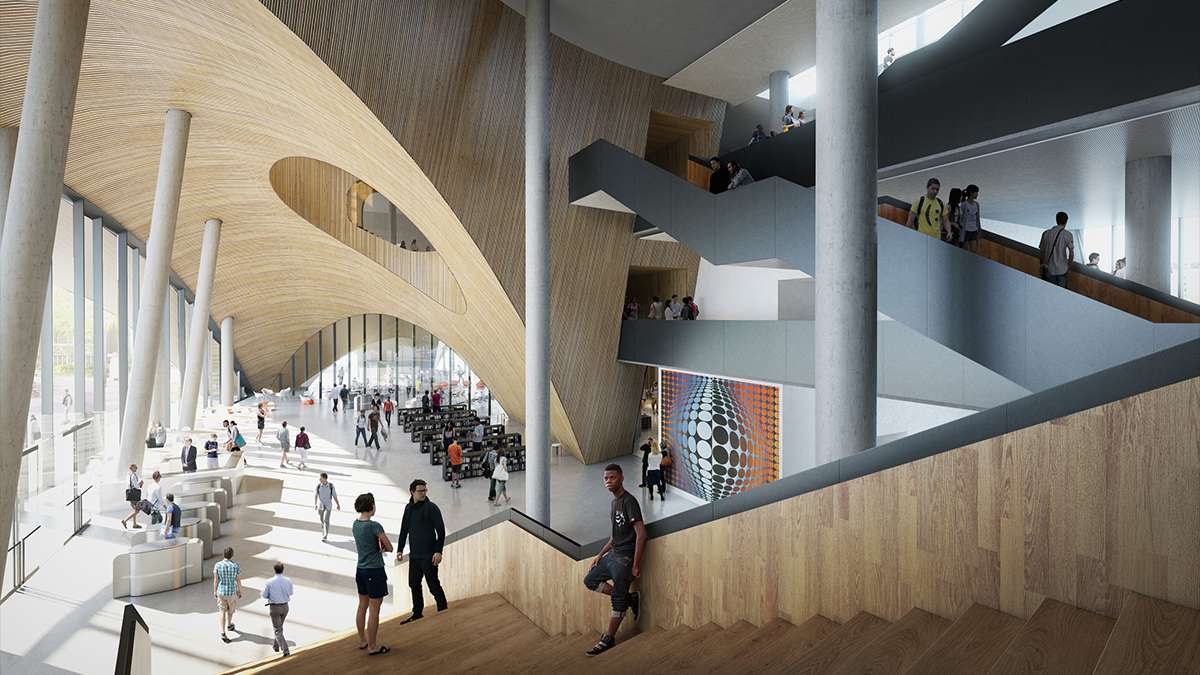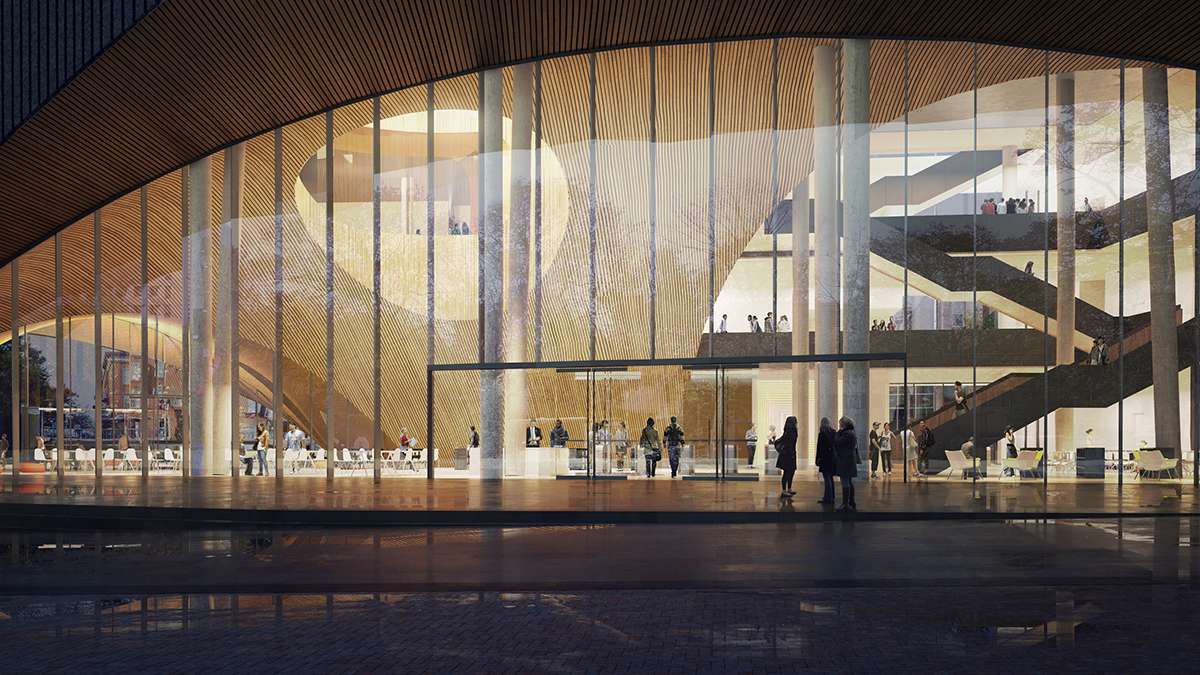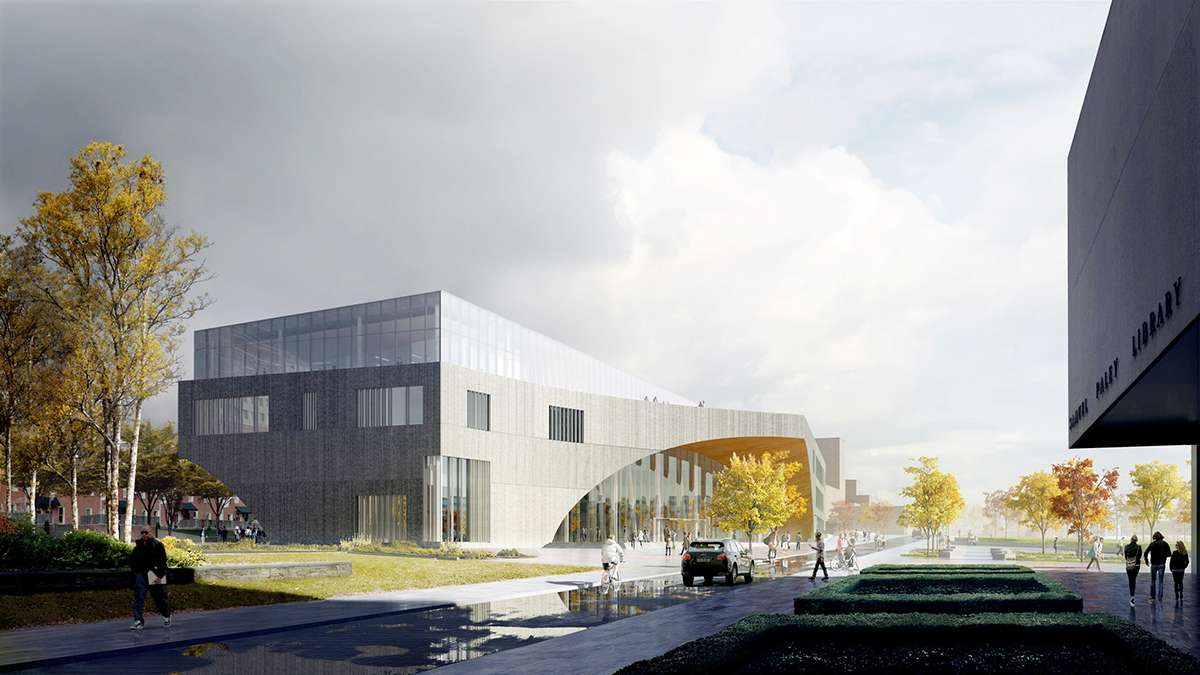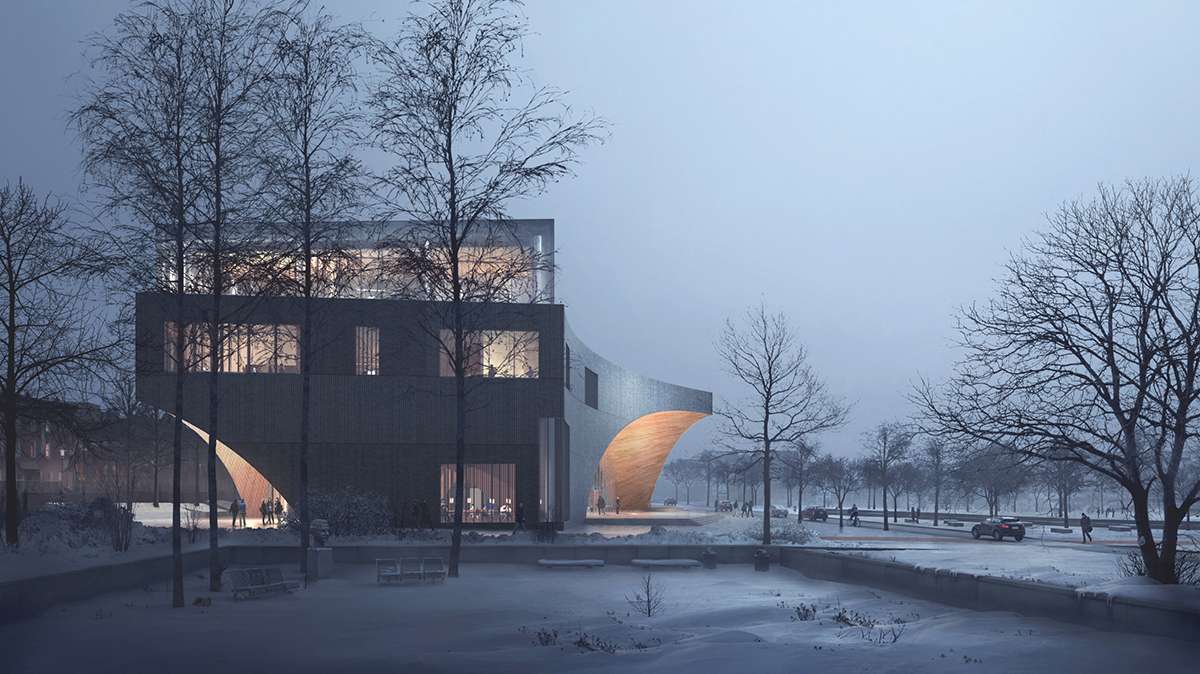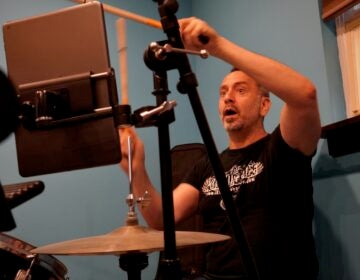8 things you probably didn’t know about Temple’s new library
The long-heralded new library planned for Temple University’s main campus is little more than a giant hole in the ground bounded by concrete barriers and chain-link fencing.
But bigwigs broke out the silver shovels Tuesday for a groundbreaking ceremony that officially marks the start of construction of the structure, which is expected to open by late 2018.
The $170 million project is the biggest in Temple’s history — 210,000 square feet in a four-story building that will sprawl over an entire city block between Polett Walk, Liacouras Walk, Norris Street and a planned quad.
So it’s already earned countless headlines.
But here are a few things you might not know:
Only 10 percent of the library’s holdings will be directly accessible to humans. The library card catalog will become as ancient as an Allosaurus in this new library, where robots will retrieve books. While 10 percent of the collection’s most recent and popular books will remain accessible for browsing, the rest of the 2 million books will be sequestered into extremely compact shelving, accessible only by an automated robotic crane, said Joseph Lucia, Dean of University Libraries.
The library will have even more places to study, nap or whatever. Any students worried they won’t be able to sneak a nap or a tryst in the stacks needn’t worry that the new library will end those opportunities. “Libraries are becoming less about storing stuff and more about collaborating and sharing ideas, so the new library will be a much more social space,” Lucia said. The new library will include classrooms, meeting rooms, digital laboratories, informal spaces and a 24/7 cafe.
The new library will have one of the largest green roofs in Pennsylvania. While you can’t hike it or picnic there, the slanted green roof will keep the building cool, help reduce stormwater runoff, improve air quality and otherwise win sustainability points, Temple spokesman Hillel Hoffmann said.
The university went almost 50 years with no library at all. Temple, founded in 1888, initially didn’t have a freestanding library. “Books were just in different locations around campus,” Hoffmann said. That changed in 1936, when the Sullivan Memorial Library opened — and was dedicated by none other than President Franklin Delano Roosevelt, Hoffmann said. That building still exists as Sullivan Hall, but, in 1965, Temple’s library collection moved one block east into a new building, the Samuel L. Paley Library. The new library will replace Paley.
Temple has a collection of libraries. The new library won’t be Temple’s only library. The university has several smaller specialty collections including the Charles L. Blockson Afro-American Collection, the Law Library, the Science and Engineering Library, the Ginsburg Health Sciences Library, the Krausz Library of Podiatric Medicine and libraries at Temple’s campuses in Harrisburg, Ambler, Rome and Japan.
Physical books aren’t going anywhere — except into the new library. While the world goes digital, Temple plans to retain most of its collection to move into the new library. “We haven’t really significantly reduced our collection when it comes to books,” Lucia said. “The real transition, in the academic world, is that the journal literature has gone online. But for many other things, people still want to handle the physical object, even current students.”
Books are just the beginning. Temple keeps plenty of things beyond books in its libraries, including decades of news clippings from the Philadelphia Inquirer and now-defunct Evening Bulletin, news-reel footage from several broadcasting stations and photographic collections from groups as varied as the Gray Panthers and the Pennsylvania Railroad.
The new edifice doesn’t have a name Naming rights could go to the most generous philanthropist. Other buildings on campus have been named after notable figures in Temple history (including Conwell Hall and Conwell House, both named after Russell Conwell, the Baptist pastor and attorney who founded the school). But a fundraising campaign is underway to create an endowment for future maintenance, Lucia said. “The fundraising we’re doing will name spaces and potentially name the building,” Lucia added. The campaign remains in its early stages and a fundraising goal hasn’t been set, he said.
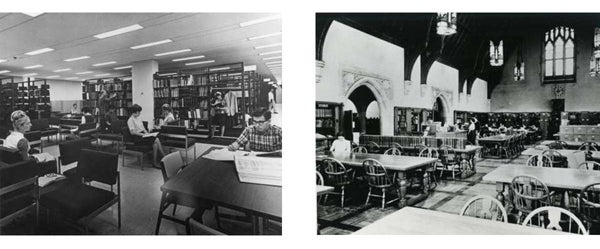 Samuel L. Paley Library (left) opened in 1965. Sullivan Memorial Library opened in 1936. (Temple University Libraries photo)
Samuel L. Paley Library (left) opened in 1965. Sullivan Memorial Library opened in 1936. (Temple University Libraries photo)
WHYY is your source for fact-based, in-depth journalism and information. As a nonprofit organization, we rely on financial support from readers like you. Please give today.


